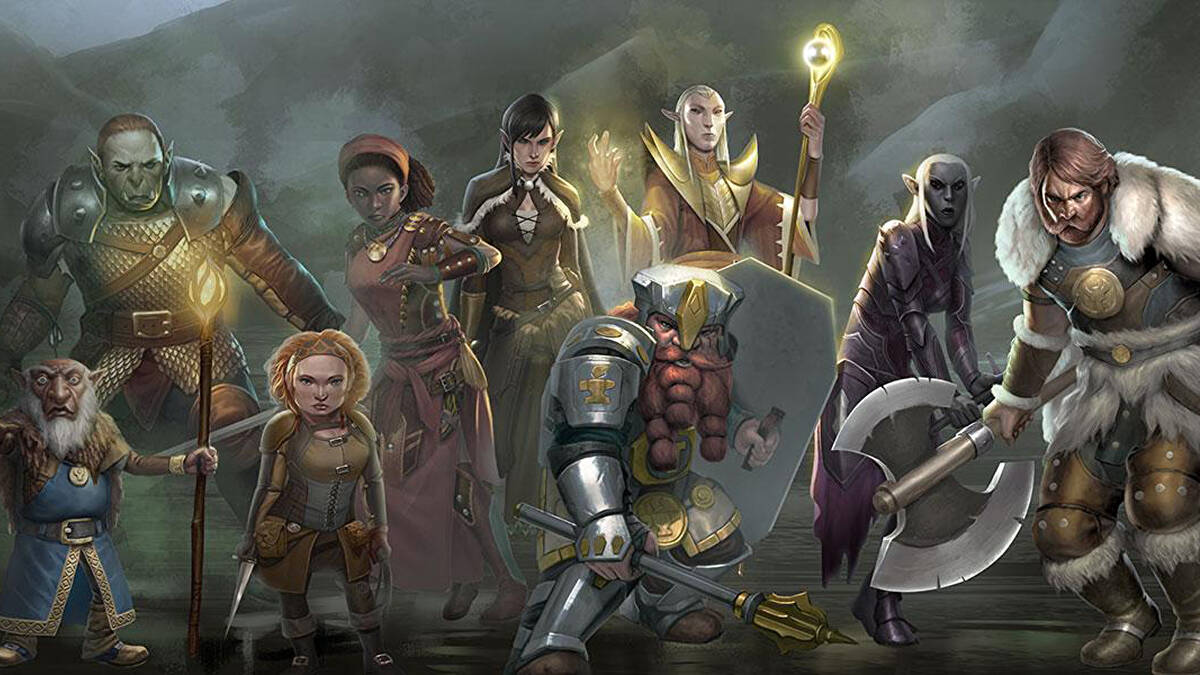When you get started creating a character in Dungeons and Dragons, there are a few questions you need to ask yourself. The first question is what role do you want to play? The second question is how do you want to play it? That’s where alignment comes in. In 5th edition DnD, alignment is more of a guideline than a strict rule but it’s still something to think about because it will influence the character you’re portraying. Are you noble? Are you unscrupulous? Are you violent? Are you passive? All these questions start with alignment.
So we need to define our terms. What is alignment? DnD alignment works on two separate axes. The good vs evil axis and the lawful vs chaotic axis. Between those two extremes is neutral. There’s no shortage of arguments one can have about alignments in DnD. Believe me. There are plenty. And they get quite metaphysical. Is evil even real? Does true neutral mean you’re a nihilist?
In the most basic terms, let’s look at each one. There are nine general alignments. A Lawful Good character is likelier to operate within the law and do good deeds. They will be the ones that take up that job from the weeping mother looking for her child with no thoughts of a reward. Doing good is its own reward. Paladins are always going to be Lawful Good because of the oaths they swear. It’s also why paladins have a reputation for being Lawful Stupid. Because they won’t lie, steal, or do anything that goes against their oath. And hilarity will inevitably ensue.

Neutral Good alignment is more likely to bend the laws if it means accomplishing the greater good. They value freedom and will be more altruistic. This kind of attitude could lead to danger because they are the ones pushing to take down the Big Bad Evil Guy with the least amount of provocation. If the BBEG happens to be a city official, well… expect a few soapbox firebrand speeches.
The Chaotic Good alignment is more the shoot first, ask questions later type. They tend to be more self-centered in that their own moral code is the only motivation they need. They go for it with all their soul if they think it's right. That means maybe taking extreme measures to accomplish it. Chaotic Good characters tend to be vigilantes.
Lawful Neutral alignment generally means that they will obey the laws and customs of society but don’t have a strong personal feelings about it. Unlike the Lawful Good characters, Lawful Neutral are far less zealous about the way they see the world. They follow a strict personal moral code, but they won’t preach it much. If those actions are interpreted as wrong by some, oh well.
True Neutral alignment is the one more often than not taken by druids. It’s all about balance. In other words, kinda wishy-washy. They don’t take sides in conflicts. They will still act in the way they see fit, but good and evil are two extremes to avoid. What is good in one society won’t necessarily be good in another. They tend to be more practical and pragmatic. So, if you want to be a politician, try true neutral.
Chaotic Neutral is the hippy alignment. These are the free spirits. These are the characters who will do whatever they want. They aren’t that concerned with people in authority. With that, they tend to be unreliable and are more likely to be selfish. The group isn’t the main concern. They are more likely to join a drum circle than risk their lives in the Tomb of Elemental Evil.
Lawful Evil alignment is for the devils. I mean that literally. It’s all about the deal. And how they can most benefit from it with the fine print. It’s about accumulating power for their own means while also serving a higher power. At least for now. You always know where they stand because it’s all in the agreement.
Neutral Evil alignment might be the evilest of them all. Because it’s pure unadulterated self-interest. They will do whatever they want to get what they want. If there’s an alignment most likely to betray the entire party for 30 pieces of silver, it would be the Neutral Evil. Why? Because they want to.

Chaotic Evil alignment is for demons. Pure avarice. Pure vice. This is what it means to be insane. Usually violently insane. There is no plan. There is no method. They just do things. And those things tend to be horrifying. And their motivation for doing it might just be because it’s fun.
This is just a general outline of alignments. Opinions will vary. But it is a good starting point. The next question to ask yourself is “what story do you want to tell?” There are plenty of examples to choose from. Is it going to be the story of a noble idealist who falls from grace? Will it be a wild-eyed anarchist who finds a righteous cause? How about a pious cleric struggling with their own nature to stay on the chosen path? Once you have an idea for your personal story, it’s easier to understand how they would act. What are their goals? Their ideals? Are they trying to be king by their own hand or humbly endeavor to do good and be that shiny beacon on a hill?
Alignment is just a guideline. Don’t feel like your character is locked into that alignment. Even good people might do horrible things. Things happen in our lives that change our worldview. You are free to explore that in your roleplay. Think about books and movies. Borrow from others to help you find your own story and enjoy the experience.



